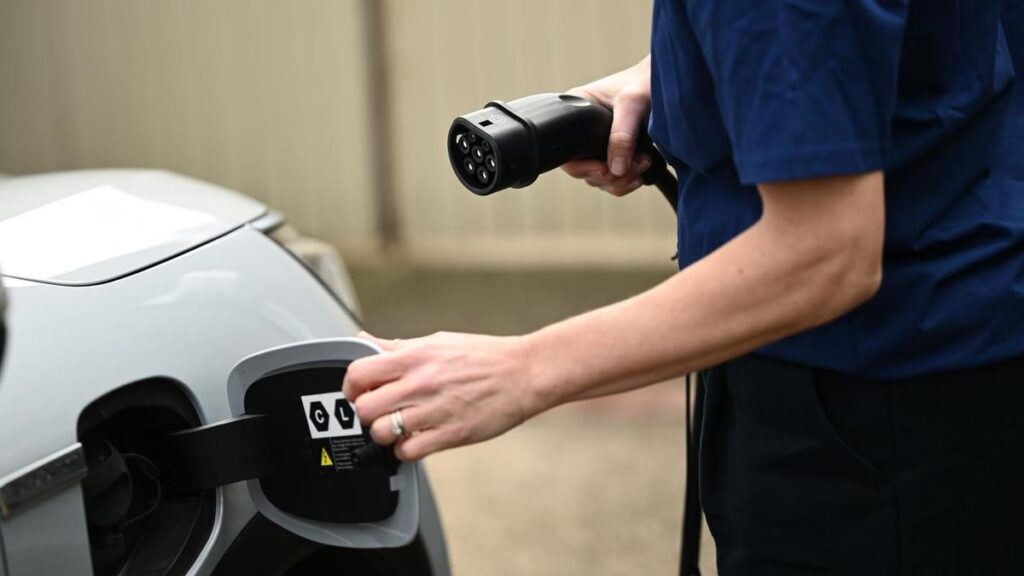
Electric vehicles (EVs) could soon play a vital role in reducing energy costs, thanks to advancements in vehicle-to-grid (V2G) technology. According to Dan Adams, co-chief executive of Amber Electric, this technology promises to connect electric cars to the electricity grid, transforming them into powerful batteries that can help manage energy supply and demand. With trials set to commence in 2026, experts believe the widespread adoption of V2G technology could significantly cut household electricity bills.
V2G technology enables electric cars to not only draw power from the grid but also return energy stored in their batteries when demand peaks. This dual functionality is becoming a focal point for major energy retailers. Recently, Origin Energy launched a trial featuring BYD Atto 3 SUVs equipped with bi-directional chargers, while AGL announced a competing trial that will also kick off in 2026. Both companies aim to explore the commercial viability of V2G technology and its potential benefits for consumers.
The trials will involve 50 participants each, with AGL offering discounted bi-directional chargers and collaborating with several automakers, including Kia, Hyundai, and Zeekr, who have agreed to extend battery warranties for participating vehicles. This partnership is crucial, as the support of car manufacturers has been identified as a key barrier to the technology’s adoption in Australia. Tim Washington, chief executive of Jet Charge, emphasized that understanding battery longevity concerns will be vital in reassuring consumers.
Initial tests indicate that concerns about battery degradation from V2G usage may be overstated. Washington points out that energy draw from a V2G setup is significantly lower than the power demands experienced during normal driving. “When you take off at the lights, you’re drawing anywhere between 80 to 300 kilowatts,” he explained, noting that home-based trials typically involve discharging at only seven to 11 kilowatts.
An additional challenge to V2G adoption has been the limited availability of compatible chargers and vehicles. Standards for bi-directional chargers are expected to be established in late 2024, but only a handful of manufacturers, including Nissan, Renault, and Volkswagen, have confirmed specific models capable of V2G functionality. Notably, major players like Tesla have yet to announce their support for this technology, but Washington suggests that a competitive market could drive rapid change.
Adams revealed that many electric vehicles currently on the road may already be compatible with V2G technology, despite manufacturer claims to the contrary. His company’s ongoing trial, worth $8.4 million and backed by the Australian Renewable Energy Agency, has shown that vehicles not marketed as V2G-compatible are functioning with bi-directional chargers. “Almost every EV on the road today is technically capable of vehicle-to-grid,” he noted, highlighting the potential for this technology to reshape consumer energy economics.
The financial benefits for participants could be significant. Early tests have indicated that owners could earn between $2,000 and $3,000 annually by selling excess electricity back to the grid during peak demand periods. Adam’s projection suggests that over a ten-year lifespan, an EV could provide up to $25,000 in savings or earnings, fundamentally altering the cost-benefit analysis of owning an electric vehicle.
Consumer engagement will be crucial for the success of these trials. Alina Dini, head of energy and infrastructure at the Electric Vehicle Council, emphasized the importance of developing attractive commercial offerings. Some trials, like those from AGL and Origin Energy, will provide incentives such as free charging or bill credits for regular participation, while others will focus on profit-sharing from energy sales.
Dini believes that V2G technology could enhance the appeal of electric vehicles. “It is definitely the reason why some people will choose to buy an electric car,” she stated, suggesting that the ability to function as a household battery may encourage consumers to opt for EVs over traditional home battery systems.
As the trials progress, stakeholders will refine their offerings, ensuring that both consumers and the energy market can fully benefit from this innovative technology. If successful, 2026 could mark a pivotal year for V2G, potentially transforming how households manage energy consumption and costs.







